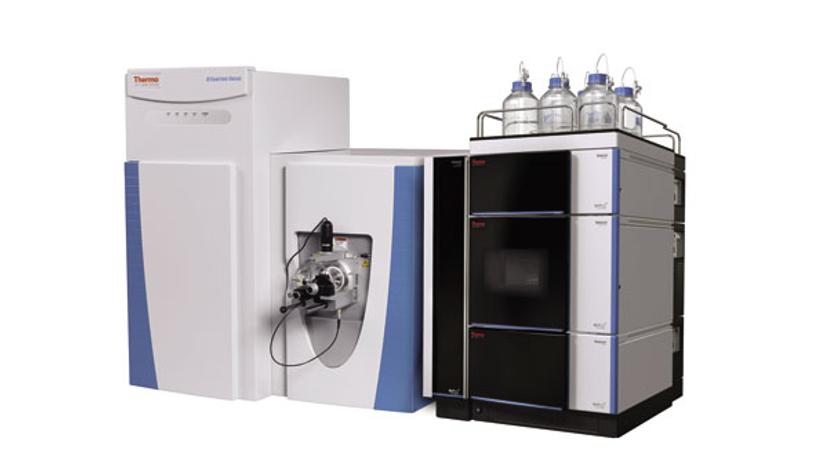Keeping Sports Clean: Unique Chemical Fingerprinting of Cheaters
State-of-the-art mass spectrometry helps scientists improve accuracy and keep ahead of doping trends
23 Aug 2016

Scott Stanley, Head Chemist at the Kenneth L. Maddy Equine Analytical Chemistry Laboratory, California, USA The Kenneth L. Maddy Equine Analytical Chemistry Laboratory The Kenneth L. Maddy Equine Analytical Chemistry Laboratory is the authorized equine drug testing laboratory for California's six permanent race courses, nine seasonal fair venues, and other performance events and locations. The laboratory is based at the School of Veterinary Medicine in the California Animal Health and Food Safety Laboratory.
Accuracy and precision are the hallmark of the best laboratories
Dr. Scott Stanley Kenneth L. Maddy Equine Analytical Chemistry Laboratory, USA
Scott Stanley is a Professor at the University of California-Davis, School of Veterinary Medicine. Scott has a Ph.D. in Toxicology from the University of Kentucky and has worked, nationally and internationally, in the fields of equine pharmacology, analytical chemistry and anti-doping detection for the last 24 years.
Scott is currently Head Chemist at the Kenneth L. Maddy Equine Analytical Chemistry Laboratory, California’s Official Drug Testing Laboratory for all horse racing events. He has published over 140 research papers on equine sports-doping methods, veterinary pharmacokinetics, toxicology and veterinary drug compounding. Scott’s current research interests are related to anti-doping methods for the detection of biopharmaceutical, natural products and designer drugs.
A unique challenge
SN: Scott, what challenges do you face in the fight against sports-doping?
SS: Equine anti-doping labs face many of the same doping trends and emerging threats as the human WADA laboratories do. Our primary sports-doping research efforts are focused on biopharmaceuticals, designer drugs, gene doping and establishing an Equine Biological Passport. All of these areas present their own unique challenges to the racing industry. We have developed strategic, collaborative relationships with key stakeholders, in order to advance our tactical research program and address these threats.
SN: What has changed with regards to technology in the sports-doping lab and how is this helping you in the field of anti-doping?
SS: Our lab now employs both the Orbitrap and triple quadrupole mass spectrometers to provide the essential speed, sensitivity, stability and accuracy required to meet the challenges we encounter in sports-doping science. The Maddy lab is equipped with more than $8 million worth of capital equipment, including more than 20 state-of-the-art mass spectrometers. These instruments provide unique ''chemical fingerprints'' for drug identification making it easier for us to detect illegal doping cases.
State-of-the-art instruments now allow for high-resolution mass spectrometry (HRMS). HRMS using the Orbitrap technology, allows us to use high-resolution data to filter out unknown analytes, and to zone in on our target analyte of interest. This enables us to process the data more efficiently at the time of analysis. We can also process the data retrospectively, weeks after the initial test, if a new analyte/drug comes on the market.

The Thermo Scientific™ Q Exactive™ Orbitrap LC-MS/MS System combines quadruple precursor ion selection, with high-resolution, accurate-mass (HRAM) Orbitrap detection
The mass spectrometry advantage
SN: What are the benefits of mass spectrometry (MS) over immunoassays?
SS: Several years ago we replaced a panel of immunoassays (IA) with liquid chromatography-mass spectrometry (LC-MS). We performed a cost-recover analysis to determine the viability of the initial investment. While not typical for a university-based laboratory, The Maddy Lab is entirely self-supported, so our operation must be revenue neutral. The bottom line showed payback on an investment of 18 months. In addition, several non-financial benefits were realized, including improved specificity (fewer false positives), improved sensitivity and surprisingly better turn-around-times.
Another advantage of HRMS is the ability to re-analyse specimens. You can’t re-interrogate samples with IA. With HRMS we can also develop new drug detection capabilities within hours or days. Let’s say that a client asks us to develop a test that will detect a brand new drug. With immunoassay, the process is very complex and it can take up to a year to develop a high quality new test. With HRMS we can complete this process within days, improving client response time and tackling new substances much more rapidly.
SN: What advice do you have for laboratory managers looking to use high resolution MS?
SS: One of the most powerful operational modes of MS is high resolution. I believe you can never have enough analytical sensitivity; using high resolution MS almost always reduces the isobaric interferences and improves experimental selectivity. In addition, high resolution permits improved isolation of analytes resulting in more accurate quantification. The subsequent enhanced ion statistics allow for improved regulatory compliance.
SN: What is the cost of a false positive result, and what effect do these results have on the public’s perception of anti-doping reporting?
The chances of getting a false positive result depends on the quality of the laboratory that carries out the drug testing. There are approximately 1,200 labs in the United States currently testing for drugs. Less than 100 of these meet federal standards and most of the individual states do not regulate drug testing laboratories. The number of false positives results returned, range from 2% to over 50%, depending on the laboratory.
While only a very small percentage of these anti-doping labs perform testing for human and equine sporting events, the concern remains the same. Accuracy and precision are the hallmark of the best laboratories. The financial liability associated with a false positive or a missed proficiency test are substantial. MS provides superior analytical specificity over immunoassay testing and therefore returns fewer false positives.

